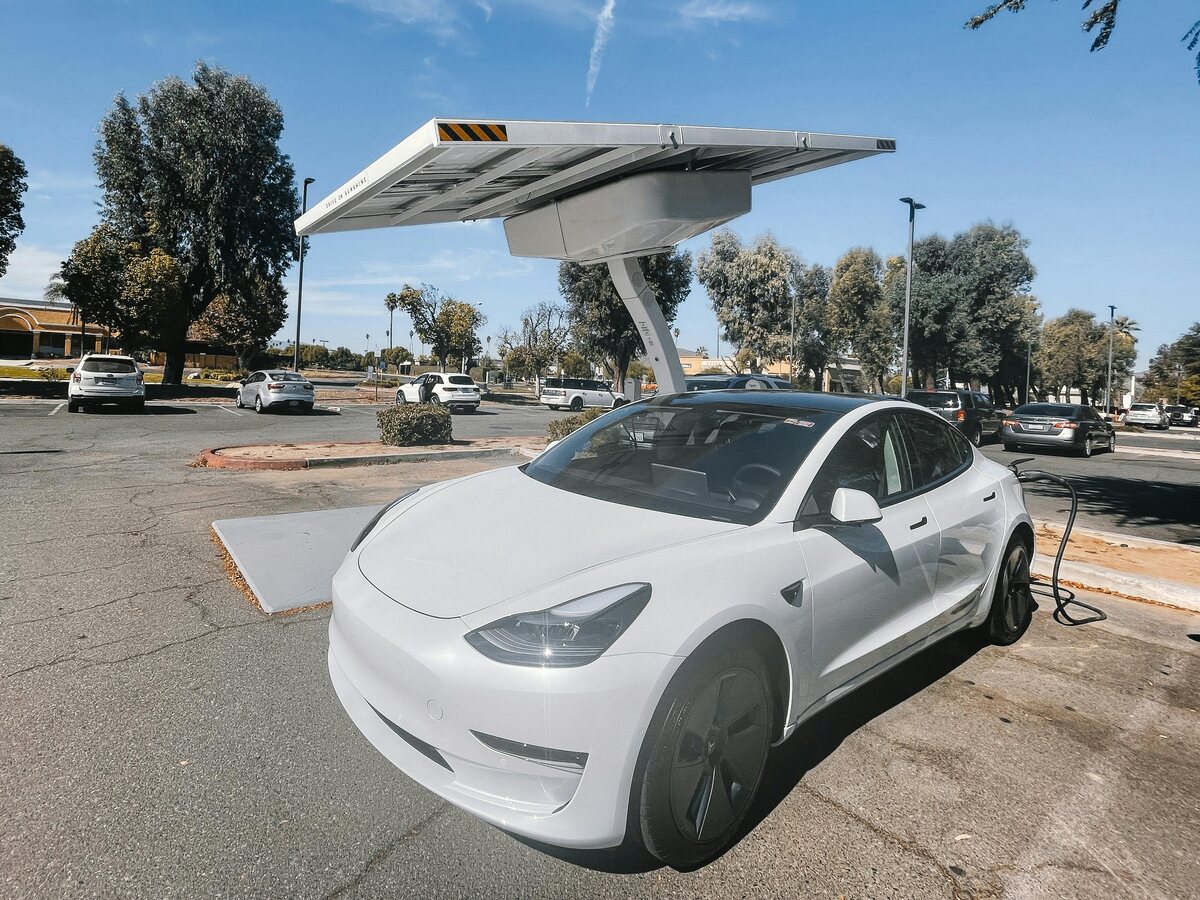Comprehensive Analysis of the Global EV Charging Equipment Market: Segmentation, Growth, and Key Players

Strong 8k brings an ultra-HD IPTV experience to your living room and your pocket.
The EV Charging Equipment Market are indispensable for the mass adoption of electric cars, enabling a convenient and reliable way to recharge batteries. With significant developments in EV technology, declining battery costs, and governmental regulations promoting a shift to electric vehicles, the global EV charging equipment market has grown exponentially over the last decade.
The EV Charging Equipment Market Overview
This blog post explores the dynamics of the EV charging equipment market, including its key segments, market size, growth prospects, key players, applications, and regulatory constraints by region. By the end of this analysis, readers will understand the critical role of charging equipment in the EV revolution and how it stands to transform the global automotive landscape.
Key Segmentation by Type
The EV charging equipment market is segmented based on various parameters, including charging type, installation type, and power supply type. Each segment has its own distinct advantages and is driven by different technological advancements and consumer preferences.
1. By Charging Type:
AC Charging: Alternating Current (AC) chargers are the most common type of charging equipment available. These chargers convert AC power from the grid into Direct Current (DC) for the EV battery. AC charging stations are usually installed in homes and offices because they provide a slower but convenient option for charging vehicles over longer durations. AC chargers typically take several hours to fully charge a vehicle, making them ideal for overnight charging.
DC Charging (Fast Charging): Direct Current (DC) fast chargers bypass the AC-to-DC conversion step and deliver DC power directly to the battery, significantly reducing charging time. These chargers are commonly used in public charging stations, highways, and fleet charging facilities where faster charging is essential. DC fast chargers are more expensive than AC chargers but are favored for commercial applications due to their speed and efficiency.
Wireless/Inductive Charging: A more recent innovation, wireless charging eliminates the need for cables by using electromagnetic fields to transfer energy between a charging pad and the EV. Although wireless charging stations are not yet widespread, they are gaining traction due to their convenience and potential for integration into roads and parking spots.
2. By Installation Type:
Residential: Home-based chargers are crucial for EV owners, particularly those with access to a private garage or driveway. Residential charging equipment is predominantly AC-based and offers slower charging but is convenient for daily use.
Commercial: Commercial installations include charging stations at workplaces, shopping malls, public parking areas, and fleet charging depots. Both AC and DC chargers can be installed in commercial settings, depending on the requirements. This segment is rapidly growing, driven by increasing demand for public and semi-public EV charging options.
3. By Power Supply Type:
Level 1: Level 1 charging equipment is the most basic form of EV charging, using a standard household outlet. This method is slow but affordable, requiring no special installation. It is generally used as a backup or in emergency situations due to its long charging times.
Level 2: Level 2 chargers require a 240-volt power supply and offer significantly faster charging times than Level 1. These chargers are commonly used in residential, commercial, and public settings. Level 2 charging stations are a popular choice for EV owners seeking quicker charging options without the cost of installing a DC fast charger.
Level 3 (DC Fast Charging): Level 3 chargers (DC fast chargers) offer the fastest charging times, making them ideal for commercial and highway settings where EVs need to be charged quickly. They are, however, more expensive to install and operate, making them suitable for specific applications like fleet management or long-distance travel.
Market Size and Growth
The global EV charging equipment market has witnessed robust growth over the past few years, reflecting the broader shift towards electric mobility. According to recent market research, the market was valued at approximately USD 7.8 billion in 2022 and is projected to reach USD 45 billion by 2030, growing at a compound annual growth rate (CAGR) of around 24% from 2023 to 2030.
Key Drivers of Market Growth:
Increased EV Adoption: As governments around the world implement stringent emissions regulations, the adoption of electric vehicles has surged. Major automotive companies are transitioning their fleets to include more electric models, further boosting the demand for charging infrastructure.
Government Incentives: Governments in regions such as North America, Europe, and Asia-Pacific are providing substantial subsidies and incentives to both manufacturers and consumers to encourage the adoption of EVs and the deployment of charging infrastructure. Policies like tax credits for charging station installations and rebates on EV purchases have helped accelerate market growth.
Private Investment and Partnerships: The private sector has played a crucial role in expanding the EV charging network. Numerous companies are investing in public charging infrastructure, while collaborations between automakers and charging equipment manufacturers have driven innovation in fast-charging technologies.
Key Market Players
Several major players are dominating the EV charging equipment market, each contributing to its development through technology advancements, strategic partnerships, and expanded infrastructure. The market is competitive, with both established companies and new entrants vying for market share.
Some of the key players include:
ChargePoint:
One of the largest and most well-known EV charging network operators globally, ChargePoint offers both AC and DC fast charging solutions for residential, commercial, and fleet applications. The company has a broad network across North America and Europe.
Tesla (Supercharger Network):
Tesla's proprietary Supercharger network is a key part of its competitive advantage, offering high-speed charging stations strategically located for long-distance travel. Tesla’s chargers, however, are mostly exclusive to Tesla vehicles, though recent reports suggest the company may open them to other EVs.
ABB:
ABB is a major player in the energy and automation technology sectors and has developed a wide range of charging solutions, including DC fast chargers and networked charging systems. The company is focused on large-scale infrastructure projects and partnerships with governments and businesses.
EVBox:
A European-based company, EVBox provides both AC and DC fast chargers, with a focus on creating scalable charging solutions for commercial and public sectors. The company also offers cloud-based management software to help operators monitor and manage charging stations.
Siemens:
Siemens, a multinational conglomerate, offers a comprehensive portfolio of EV charging solutions, including both AC and DC fast chargers. Siemens has been involved in several large-scale public charging infrastructure projects, partnering with governments and private companies to expand EV charging networks globally.
Application
The applications of EV charging equipment extend across multiple sectors, including residential, commercial, fleet management, and public transportation.
Residential Charging:
As the majority of EV owners prefer charging their vehicles at home, residential charging is a significant segment. Home-based chargers are relatively affordable and easy to install, making this an attractive option for individual consumers.
Commercial and Public Charging:
Commercial charging stations are increasingly being installed in workplaces, shopping centers, and public parking areas, providing convenient options for drivers on the go. Public charging networks are essential for long-distance travel, making highway fast-charging stations a key area of growth.
Fleet Charging:
Many companies operating vehicle fleets, including logistics, ride-hailing, and public transportation companies, are transitioning to electric fleets. Fleet operators require reliable and scalable charging solutions to manage large numbers of vehicles efficiently.
Legal Constraints
The regulatory environment for EV charging equipment varies significantly by region, affecting market dynamics and growth prospects.
North America:
In the United States, the federal government, as well as individual states, provide tax credits, rebates, and grants for the installation of EV charging stations. However, the regulatory landscape can be complex due to varying state and municipal codes.
Europe:
Europe has been a pioneer in EV adoption, with strong government backing for the expansion of charging infrastructure. The European Union has set ambitious goals for reducing emissions, which has led to substantial investments in charging networks. Additionally, the EU is focusing on interoperability, requiring chargers to be compatible with different vehicle models.
Asia-Pacific:
The Asia-Pacific region, particularly China, has seen rapid growth in EV sales and charging infrastructure. China leads the world in both EV adoption and charging station deployment, supported by strong government mandates and subsidies. Other countries like Japan and South Korea are also investing heavily in charging infrastructure, although legal constraints vary depending on national regulations.
Conclusion
The global EV charging equipment market is poised for significant growth in the coming decade, driven by increasing EV adoption, supportive government policies, and technological innovations. As consumers and businesses shift towards electric mobility, the demand for reliable and efficient charging solutions will continue to rise. Key market players are working tirelessly to expand charging networks and develop advanced technologies that meet the needs of different users, from individual EV owners to large fleet operators.
Legal constraints and regulations will play a critical role in shaping the market, particularly as governments around the world push for more stringent emissions targets. As the market matures, the focus will likely shift from simply expanding infrastructure to optimizing it for speed, convenience, and interoperability, paving the way for a fully electric future.
Note: IndiBlogHub features both user-submitted and editorial content. We do not verify third-party contributions. Read our Disclaimer and Privacy Policyfor details.







